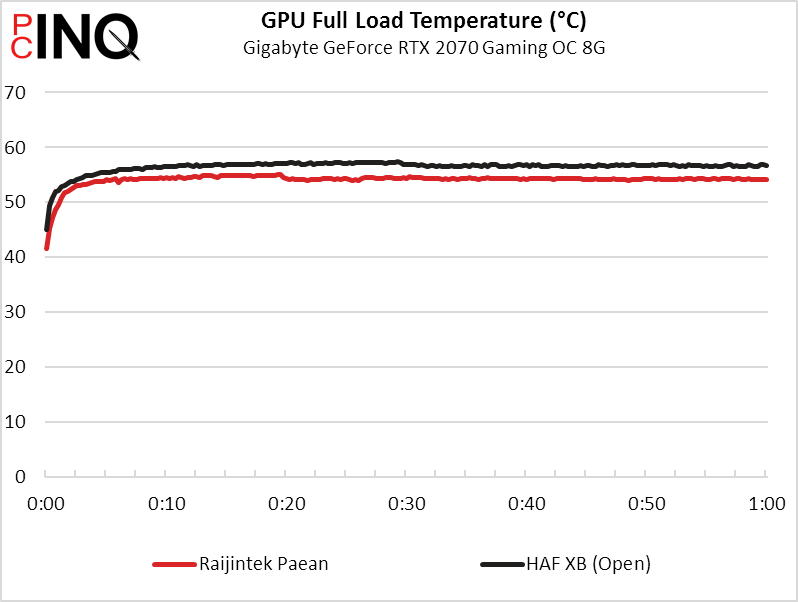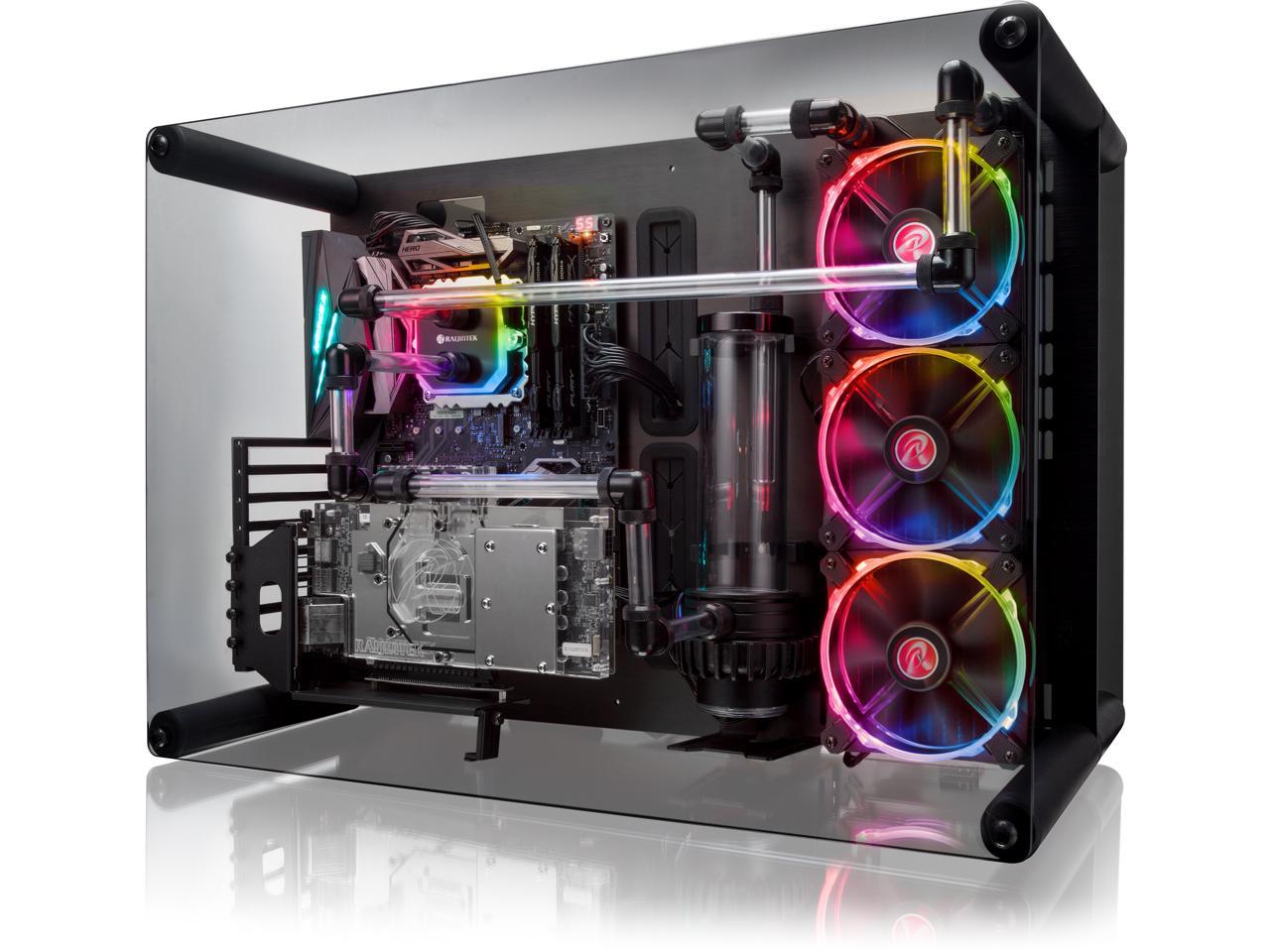Raijintek Paean Open-Air Mid-Tower ATX Case Review
Hardware Installation And Performance Evaluation
Contents
Though Raijintek specifies the Paean only as ATX (and smaller), motherboard space is unlimited apart from the lack of cable passages for motherboards much larger than standard. The space between a standard ATX motherboard and its radiator mounts is dedicated almost entirely to liquid cooling components such as pumps and reservoirs.

Though it’s designed to hold drives, we’re looking at that rear bracket as a great place to stuff excess cable length. The show-system builders that this case was designed for will probably use custom-length cables.

Raijintek sent its own liquid cooler for our evaluation, but we decided to review it separately since we couldn’t cut it tubing to fit multiple systems. We’re instead pitting the Paean against our own home-brew open platform, which isn’t nearly as open as Raijintek’s. One concession we made was to mount its fans in “blow” orientation, since the Paean would be used that way.

We didn’t have many options regarding the installation of our cooling system: Even trying to put the fans on the opposite side of the center panel wouldn’t work, since our radiator used M3 screws, and its fan screws were too short to go through the Paean’s 4mm-thick aluminum. On the other hand, putting all of our hardware on one side meant that we had some space to mount the Paean’s front-panel module in its optional front-edge position. We look forward to seeing how much better it looks in our upcoming Raijintek Scylla Pro liquid cooling kit review!
| System Configuration | |
| CPU | Intel Core i9-12900KF: 16C/24T, 3.2-5.2 GHz, 30 MB L3 Cache, LGA 1700 |
| CPU Cooler | Alphacool Eisblock XPX CPU, VPP655 with Eisbecher D5 150mm, NexXxoS UT60 X-Flow |
| Motherboard | ASRock Z690 Taichi, BIOS 1.43, LGA 1700 |
| RAM | Corsair Dominator Platinum RGB CMT32GX5M2X5600C36 DDR5-5600, 2x 16GB Kit |
| Graphics | Gigabyte GeForce RTX 2070 Gaming OC 8G: GeForce RTX 2070 1815 MHz GPU, GDDR6-14000, Maximum Fan When Listed |
| Hard Drives | Toshiba OCZ RD400 256GB NVMe SSD |
| Sound | Integrated HD Audio |
| Network | Integrated Gigabit Networking |
| Power | be quiet! Dark Power Pro 10 850W: ATX12V v2.3, EPS12V, 80 PLUS Platinum |
| Test Configuration | |
| Load Software | AIDA 64 Engineer Version 6.00.5100, Stress CPU, FPU, Cache, GPU |
| H/W Monitoring | HWiNFO64 v6.28-4200 |
| SPL Monitoring | Galaxy CM-140 SPL Meter: Tested at 1/4 m, corrected to 1 m (-12 dB) |
Test Results
We’re not surprised to see the Raijintek Paean running a little warmer than the HAF XB when using the same cooler, since the Paean’s side panel directs a small amount of component heat towards the intake side of the radiator’s fans.

We were surprised to see the Paean outperform our reference case in voltage regulator temperature, given that the radiator fans in our HAF XB blow air towards these components. The results may have been different if we’d used a board with a passive heat sink, rather than the Z690 Taichi’s active cooler.

Once again, a more-open system appears better than a ventilated system when used with an active cooler. This time it’s the motherboard’s PCH fan getting involved.

There’s also the possibility that things like the graphics card fan work better when the system is tilted up. With numbers this close, we’re not going to bother standing our old system on its side or laying the Paean down to find out.

The fact that the Paean is quieter might surprise some readers, since it’s open, but our fans faced its glass side panel rather than toward the sound meter.

Overall, we’re pleased to see the Paean outperform our old test platform in both temperature and noise.

Open platforms don’t leave a lot to discuss, as they’re either well made or poorly made and the Paean is very well built. It holds our components securely and looks good doing it.
| Pros: | Cons: |
|
|
| The Verdict: | |
| Quality construction is the hallmark of a truly great open-air chassis. | |


